HP Stream 7 Review: A $119 Windows Tablet
by Brandon Chester on December 19, 2014 8:00 AM ESTDisplay
The display is one of the most important aspects of a device, as it's the portal for interaction between the user and the software. Unfortunately, with inexpensive devices like the Stream 7, the display is often the first thing to be put on the chopping block. It's simply very difficult to put a high quality panel in a low cost device and make money selling it. That being said, HP has actually attempted to put a decent panel in the Stream 7 considering its price target.
Like I stated before, many other tablets at this size and price point either opt for a TN panel, or they reduce the resolution to 1024x600 or even go lower to 800x480, which is borderline unusable. HP has put a 1280x800 IPS panel in the Stream 7, which is fairly good considering that two years ago most Android tablets of any size shipped with that same resolution. The glass is highly reflective, and this is coupled with the fact that the display isn't laminated. There's also some light bleed at the bottom, but at $119 I can excuse this.
Of course, specs that you read on paper like size and resolution only tell part of the story. Color accuracy, brightness, and contrast all have an impact on overall display quality, and to measure these we use SpectraCal's CalMAN 5 software along with X-Rite's i1Pro 2 spectrophotometer and i1Display Pro colorimeter.
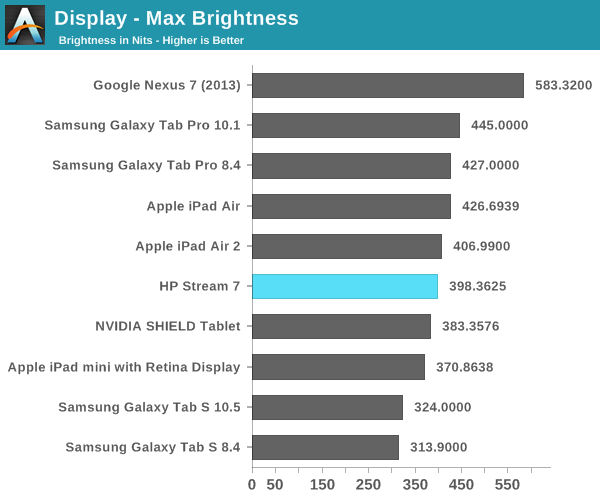
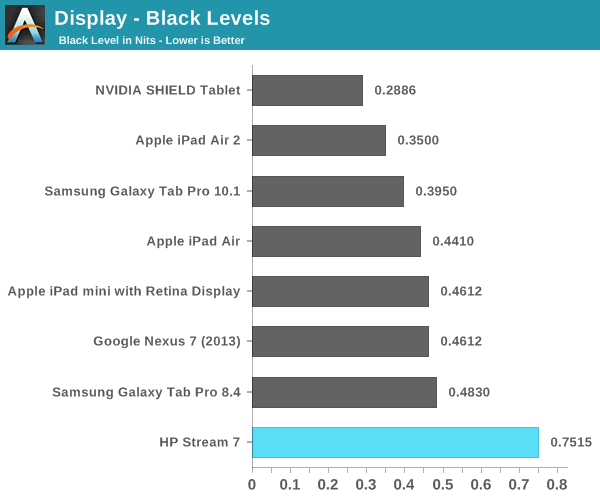
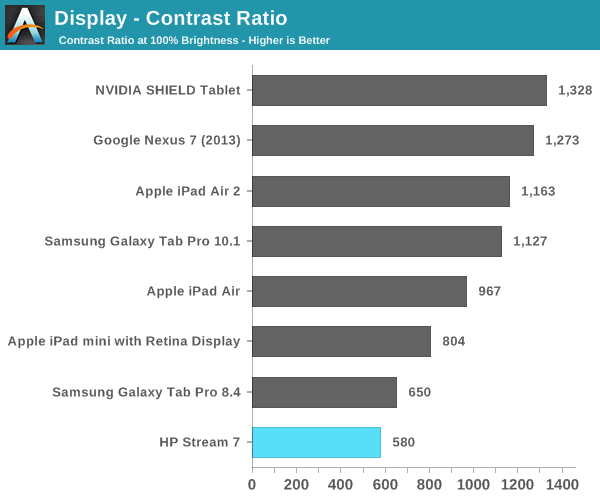
As you can see, the brightness of the Stream 7 is competitive with other tablets. Unfortunately, the black levels are just too high, which in turn leads to a very low contrast ratio. It should be noted that these measurements were achieved by disabling Intel's Display Power Saving Technology (DPST) feature, which causes dynamic brightness and contrast depending on the image displayed on the screen. While some other devices do this to some degree, DPST ended up reducing max brightness measurements by nearly 100nits, and the constantly changing brightness played havoc with measurements during analysis and calibration.


In the grayscale we see a shift toward blue, with the red steadily dropping off as brightness increases. This leads to the grayscale performance being some of the worst we have tested, but at $119 there's really no room for HP to do any calibration to the display panels at the factory.
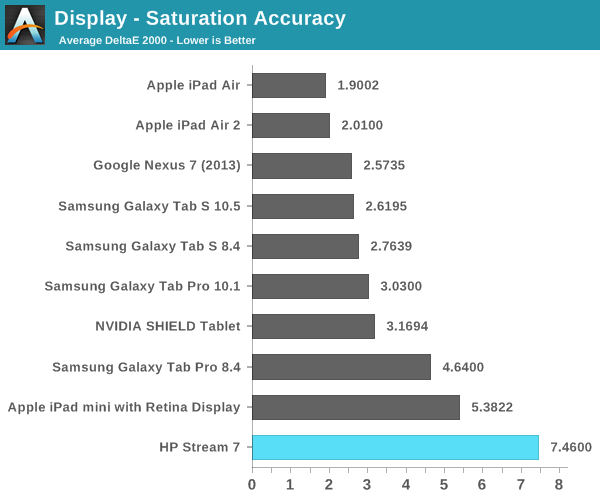
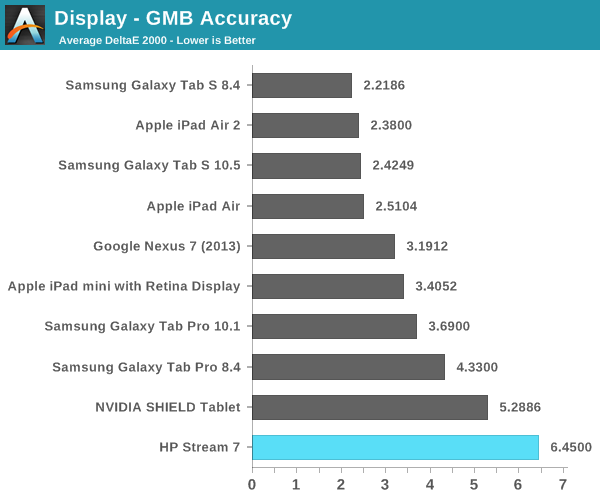
As with the grayscale test, we see poor performance in the saturation sweep. The display does not cover all of sRGB, and we see that for each 20% increment in the saturation sweep, the red, blue, and magenta saturations are all 20% lower than they should be and just generally inaccurate. The poor grayscale and saturation performance leads to a high average error in the color checker test, which means that the Stream 7 is not going to be able to accurately reproduce colors.
Again, this is to be expected with a device of this price point. It does however provide a good example of how the idea that IPS technology correlates with color accuracy is a misconception. With the prices of IPS displays being driven into TN territory by affordable eIPS panels, having an IPS display really just guarantees better viewing angles than a TN panel, nothing more.
One last thing to note about the display which does not show up in any measurements is that it is a 6bit + AFRC eIPS panel. This is not uncommon even in desktop monitors that cost as much as $400, but it does mean that there is noticeable posterization compared to a display with actual 8-bit color depth for red, green, and blue. This is not helped by the fact that Internet Explorer is not smart about displaying images; it doesn't seem to apply the same dithering that Chrome and Firefox do to mask color banding.
Calibration
Fortunately, the HP Stream 7 runs Windows. Unlike Android and iOS, Windows has color management capabilities. This allows us to calibrate the Stream 7 in an attempt to fix some of the issues with the display. We are working with a narrow gamut panel here so we aren't going to see much improvement to the saturation test, but we can certainly improve grayscale and color accuracy within the display's gamut.
After creating and applying an ICC profile created by CalMAN, we see a dramatic improvement in grayscale performance on the Stream 7. Gone is the shift toward blue, with a white point of 6595K that is very close to standard. Shades of grey are now accurate enough that you would be unable to see a difference from a reference monitor. These improvements unfortunately are accompanied by a significant drop in luminance, with a max display brightness of 308.5 nits after calibration.
We see slight improvement in the saturation sweep, but it's still nothing exceptional and unfortunately bound by the display's small color gamut. However, there's a significant improvement in the color checker test, although much of this can be attributed to the improvements in grayscale. There is an overall improvement in the accuracy of colors, but a few colors actually have a greater error after calibration than before. The biggest improvements are to mixtures of green and red, which has a significant impact on photos and videos by improving the accuracy of skin tones.
Overall, I'm surprised that the Stream 7 was able to be improved this much. It's certainly not perfect after calibration but it's much better. Unfortunately, I don't think many buyers of the Stream 7 are going to have the necessary equipment to calibrate the display properly, so it's more of an academic exercise.


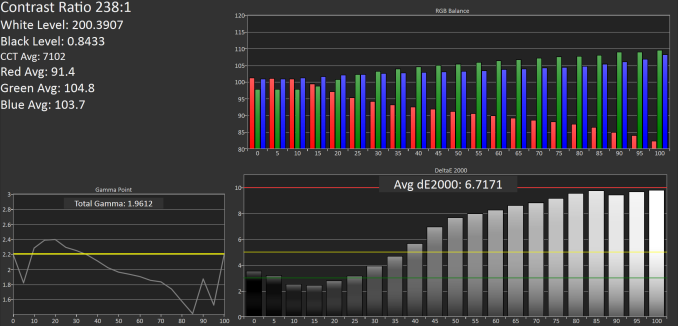
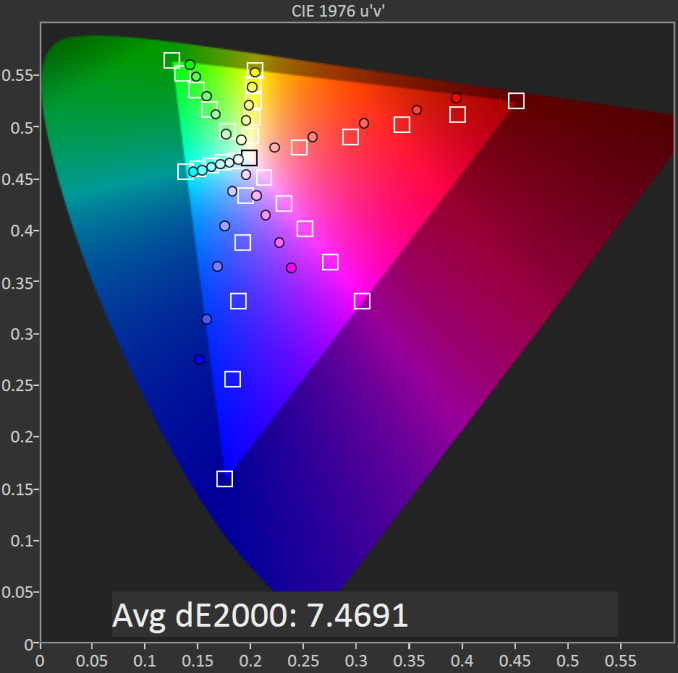
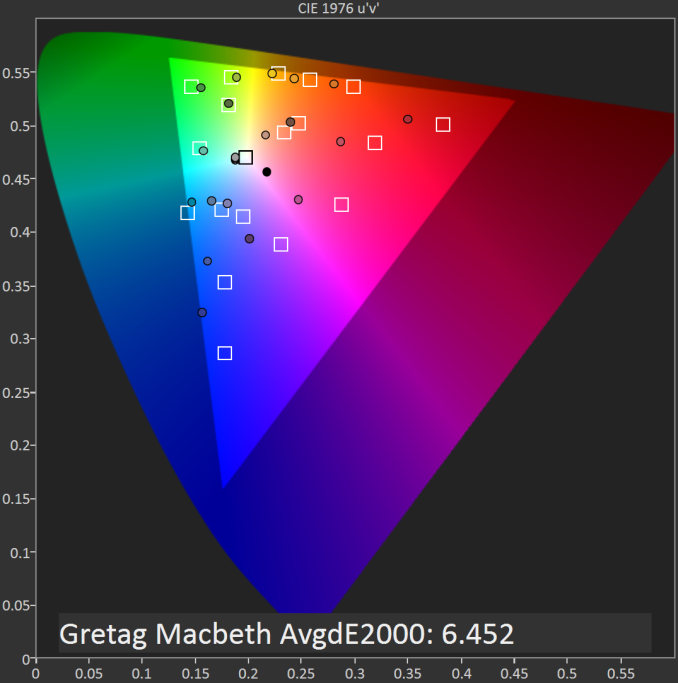
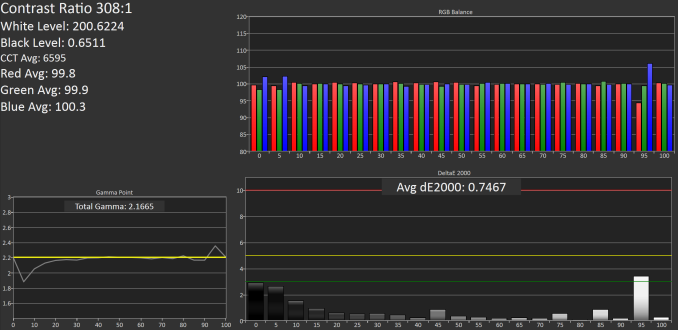
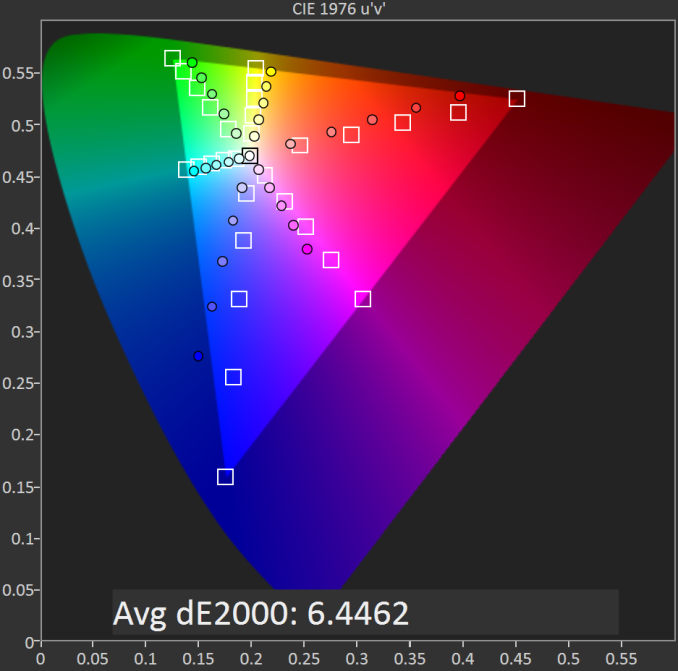
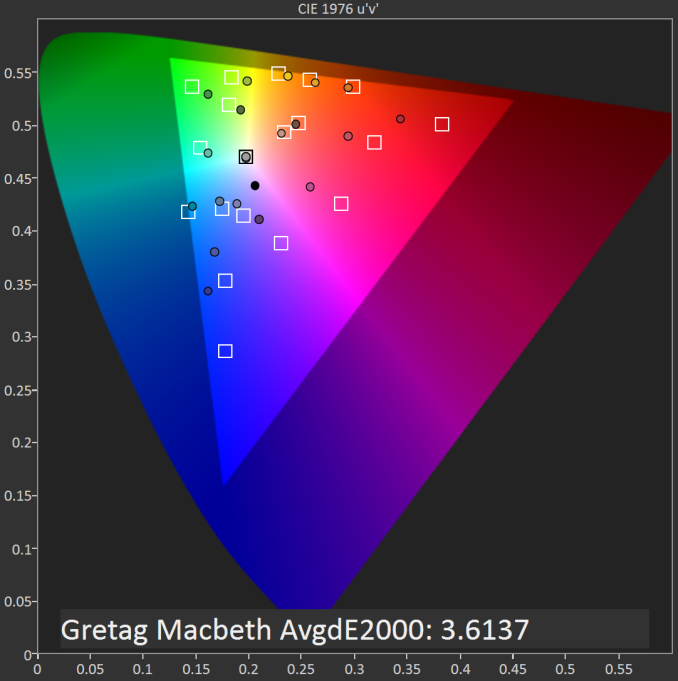








157 Comments
View All Comments
lioncat55 - Friday, December 19, 2014 - link
I own the stream 7, the 1GB of ram can be pushed very far. Its shocking to me what I can do. Heroes of the Storms plays easy at the lowest settings.mrdude - Friday, December 19, 2014 - link
Petition to rename the bottom of all GPU related benchmarks as 'The Intel Zone'smilingcrow - Friday, December 19, 2014 - link
Using 4 decimal places for Maximum Brightness which is a value in the 100s is plain silly. Rounding to the nearest integer seems sensible to me.Hairs_ - Friday, December 19, 2014 - link
"The other thing that motivated me was the general lack of coverage for devices at the low end of the market. News coverage and reviews always seem to focus on the newest iPad, the newest Galaxy Tab, or the newest Ultrabook. There's not as much attention paid to these inexpensive devices, and it's problematic because many people simply cannot afford more premium devices that cost many hundreds or thousands of dollars. If nobody takes a look at the low end, there's also no push for manufacturers to improve those devices."THANK YOU!
Finally someone gets it. Even if this product isn't fantastically amazing, or doesn't have some esoteric use case which requires research, or a sexy pr angle, there are lots of prospective buyers at this level who are being left absolutely in the lurch by tech sites.
More of these, please!
MonkeyPaw - Friday, December 19, 2014 - link
The ironic thing about the Windows Appstore is that, despite having terrible selection and quality in general, it has the best RSS (Freely) client I have ever used on a touch device in NextGen Reader.Arbie - Friday, December 19, 2014 - link
I agree with Hairs. These are interesting devices and some crucial facts like actual battery life are nowhere available. Others comment that 2GB etc are better; well, maybe test some of those devices too. I personally have no interest in flagship smartphones.BrokenCrayons - Friday, December 19, 2014 - link
Thanks for the review. I've been really curious about the Stream 7 for a while now and I'm glad it got the usual, thoughtful treatment from Anandtech. Windows tablets, inexpensive ones in particular, don't get a lot of attention which makes being an informed buyer pretty difficult.bill.rookard - Friday, December 19, 2014 - link
The point of this article is that there are no bad devices, there are bad price points. I have one of these, and I picked it up at the local retail store. I didn't pay 119.00 for it, I didn't pay 99.00 for it. I got this for $79.00 out the door. They had a $20.00 off special for it, no coupons required.While certainly it is not a perfect device by any means, in truth, at $80.00 it's one of those price points where you just can't go wrong. It runs full Win8. Decent display. Sufficiently powerful for a tablet. Battery life is long enough for what I use it for, and it's removable and replaceable. I haven't tried the audio jack yet (I may do that when I get home now that I'm aware of it), but still, again for what I paid for it, how could I complain?
Michael Bay - Friday, December 19, 2014 - link
Brandon, you really should have reviewed a Stream 8. Nobody expects anything from 7, but at 150$ there should be less compromise in specs and build of the device, making it much more desirable.And why all this Mami fixation, really.
Spectrophobic - Friday, December 19, 2014 - link
I don't think a mere inch is worth almost double the price of a Stream 7 on sale. A bigger battery is always good but in terms of running the thing at 100% scaling, a fine point stylus is still required. It's nice for $150 if it has 2GB RAM.Also, it's Mami-san. Who couldn't resist her?